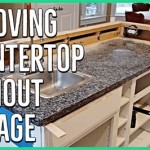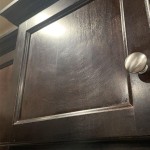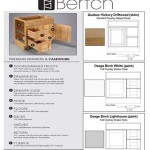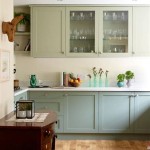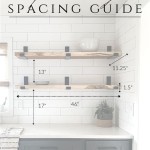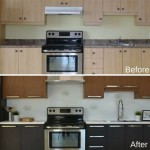Satin or Semi-Gloss Paint for Kitchen Cabinets: A Comparative Analysis
The selection of paint sheen for kitchen cabinets is a crucial decision impacting both the aesthetic appeal and the long-term durability of the cabinetry. Two of the most commonly considered options are satin and semi-gloss finishes. Both offer distinct characteristics that can influence the overall ambiance of the kitchen and the ease with which the cabinets can be maintained. Understanding the nuances of each sheen is essential for making an informed choice that aligns with individual preferences and practical needs.
The appearance of kitchen cabinets plays a significant role in defining the style of the kitchen. A well-chosen sheen can accentuate the architectural details of the cabinetry, complement the overall color scheme, and contribute to the perceived brightness and spaciousness of the room. Simultaneously, kitchen cabinets are subject to frequent use and exposure to moisture, grease, and food splatters. The selected paint finish must, therefore, possess adequate durability and resistance to these elements to ensure longevity and ease of cleaning. This article will delve into the properties of satin and semi-gloss paint finishes, examining their strengths and weaknesses in the context of kitchen cabinet applications.
Durability and Cleanability
Durability and cleanability are paramount considerations when selecting paint for kitchen cabinets. The kitchen environment is inherently prone to spills, splatters, and the accumulation of grease and grime. Cabinets, particularly those in close proximity to the stovetop and sink, are subjected to frequent cleaning. The chosen paint must withstand repeated scrubbing without losing its sheen or color integrity.
Semi-gloss paint generally boasts a higher level of durability and cleanability compared to satin paint. Its harder, less porous surface offers greater resistance to stains, scuffs, and moisture penetration. The smoother surface of semi-gloss also facilitates easier removal of dirt and grease with a simple wipe-down. This makes semi-gloss a particularly suitable choice for high-traffic kitchens or those with young children who are more likely to make messes.
Satin paint, while still relatively durable, possesses a slightly more porous surface than semi-gloss. This means it may be more susceptible to staining and require more vigorous cleaning to remove stubborn marks. While regular cleaning is still effective, repeated scrubbing can potentially dull the sheen of satin paint over time. For kitchens that experience less heavy use, satin can offer a satisfactory level of durability, but more caution regarding cleaning is necessary.
The inherent characteristics of the paint formulation itself also play a role in durability. High-quality acrylic or urethane-alkyd paints, regardless of sheen, tend to be more durable and resistant to damage than lower-quality options. Investing in premium paint is a worthwhile consideration when aiming for long-lasting results.
Aesthetic Appearance and Light Reflection
The aesthetic appearance and light-reflecting properties of paint significantly impact the ambiance and perceived size of a kitchen. The degree of sheen influences how light is reflected from the surface of the cabinets, affecting the overall brightness and highlighting any imperfections in the cabinet surfaces.
Satin paint possesses a subtle, velvety sheen that provides a soft and elegant look. It reflects less light than semi-gloss, resulting in a more muted and understated appearance. This can be advantageous in kitchens with abundant natural light, as it minimizes glare and creates a warmer, more inviting atmosphere. The lower reflectivity of satin also helps to conceal minor imperfections in the cabinet surfaces, such as dings, dents, or inconsistencies in the wood grain.
Semi-gloss paint, on the other hand, exhibits a higher level of light reflection, creating a brighter and more vibrant appearance. This can be particularly beneficial in smaller kitchens or those with limited natural light, as it helps to create a sense of spaciousness. The higher reflectivity of semi-gloss, however, also accentuates any imperfections in the cabinet surfaces. Therefore, meticulous surface preparation is crucial when opting for semi-gloss paint, as any flaws will be more noticeable.
The choice between satin and semi-gloss ultimately depends on the desired aesthetic and the existing lighting conditions in the kitchen. If a softer, more forgiving finish is preferred, satin is a suitable option. If a brighter, more modern look is desired, and the cabinet surfaces are in good condition, semi-gloss may be a better fit.
Considerations for Application and Surface Preparation
Proper application and surface preparation are crucial for achieving a professional and long-lasting paint finish on kitchen cabinets, regardless of the chosen sheen. The quality of the final result is heavily influenced by the meticulousness of the preparation process and the skill of the applicator.
Regardless of the sheen selected, thorough cleaning of the existing cabinet surfaces is the first critical step. This involves removing any grease, grime, dirt, and loose paint particles. A degreasing cleaner is recommended for cabinets that have been exposed to significant grease buildup. After cleaning, the surfaces should be rinsed thoroughly with clean water and allowed to dry completely.
Sanding is another essential step in the surface preparation process. Sanding helps to create a slightly roughened surface that the new paint can adhere to more effectively. It also helps to smooth out any imperfections or inconsistencies in the existing finish. The appropriate grit of sandpaper will depend on the condition of the cabinets, but a medium-grit sandpaper is generally suitable for most situations. Dust created from sanding should be thoroughly removed before priming.
Priming is a critical step that should not be skipped, particularly when painting over previously painted surfaces or bare wood. Primer helps to seal the surface, prevent the existing paint from bleeding through, and provide a uniform base for the new paint to adhere to. A high-quality primer specifically designed for cabinets is recommended. The primer should be applied evenly and allowed to dry completely before applying the first coat of paint.
The application of the paint itself requires careful attention to detail. Several thin coats of paint are generally preferable to one thick coat, as this helps to prevent drips, runs, and uneven coverage. The paint can be applied using a brush, roller, or sprayer, depending on the desired finish and the skill of the applicator. When using a brush or roller, it is important to use smooth, even strokes and avoid applying too much pressure. A sprayer can provide a smoother, more uniform finish, but it requires specialized equipment and skill to operate effectively.
Between coats of paint, light sanding with a fine-grit sandpaper can help to smooth out any imperfections and improve the adhesion of the subsequent coats. The final coat of paint should be applied carefully and allowed to dry completely before reassembling the cabinets. Proper ventilation is essential throughout the entire painting process to ensure adequate drying and prevent the buildup of harmful fumes.
When considering the nuances of application, both satin and semi-gloss paints benefit from proper technique. However, the higher sheen of semi-gloss can accentuate imperfections in the application, making a smooth, even finish even more critical. Brush strokes and roller marks are more visible with semi-gloss, potentially necessitating more skilled application techniques or the use of a sprayer. Satin, with its smoother finish, can be slightly more forgiving of minor application errors.
In summary, meticulous surface preparation, careful application, and the adherence to proper drying times are essential for achieving a professional and durable paint finish, regardless of whether satin or semi-gloss paint is selected for kitchen cabinets. The specific techniques and considerations may vary slightly depending on the chosen sheen and the condition of the cabinets, but the fundamental principles remain the same.
Should Cabinets Be Semi Gloss Or Satin Paint Quora

Kitchen Cabinet Painting Amador County I Have To Pick A Sheen Too Michael Hines Company

Painting Cabinets Your Questions Answered Honey Built Home

Satin Vs Semi Gloss And Paint Differences

What Sheen For Kitchen Cabinets Pa
The Best Trim Paint Brand And Type High Gloss Semi Or Satin Designed

Behr Premium 1 Qt 57 Frost Semi Gloss Enamel Interior Exterior Cabinet Door Trim Paint 712004 The Home Depot

The Best Trim Paint Brand And Type High Gloss Semi Or Satin Designed

Satin Vs Semigloss Finishes Which Is Better Hunker

Satin Vs Semi Gloss What S The Difference
Related Posts



